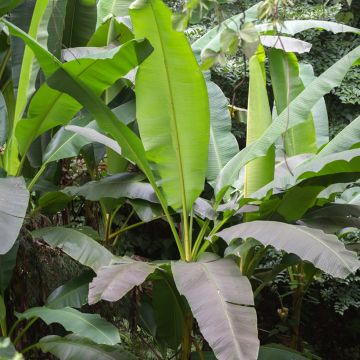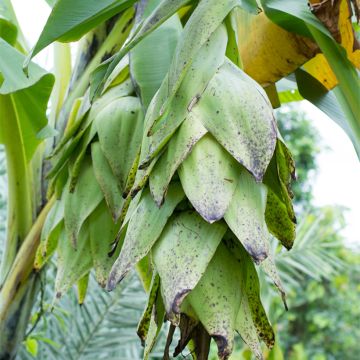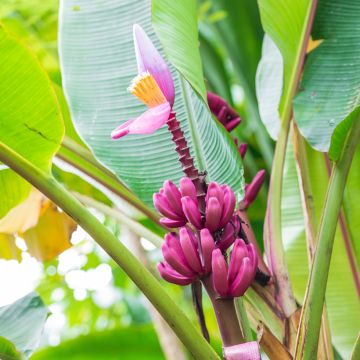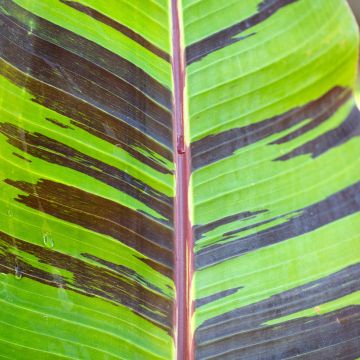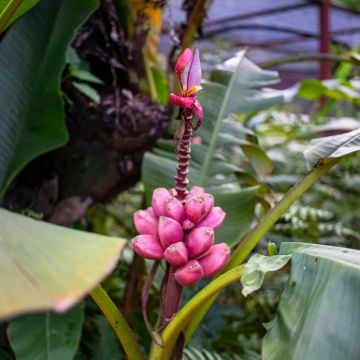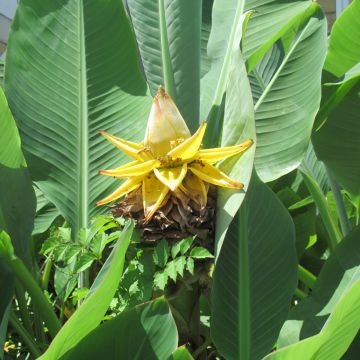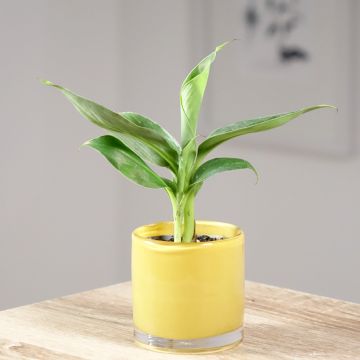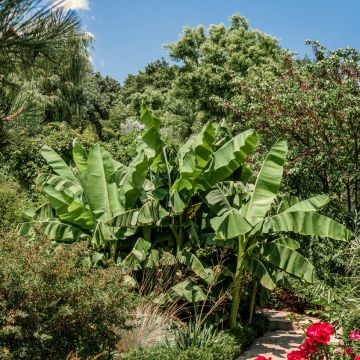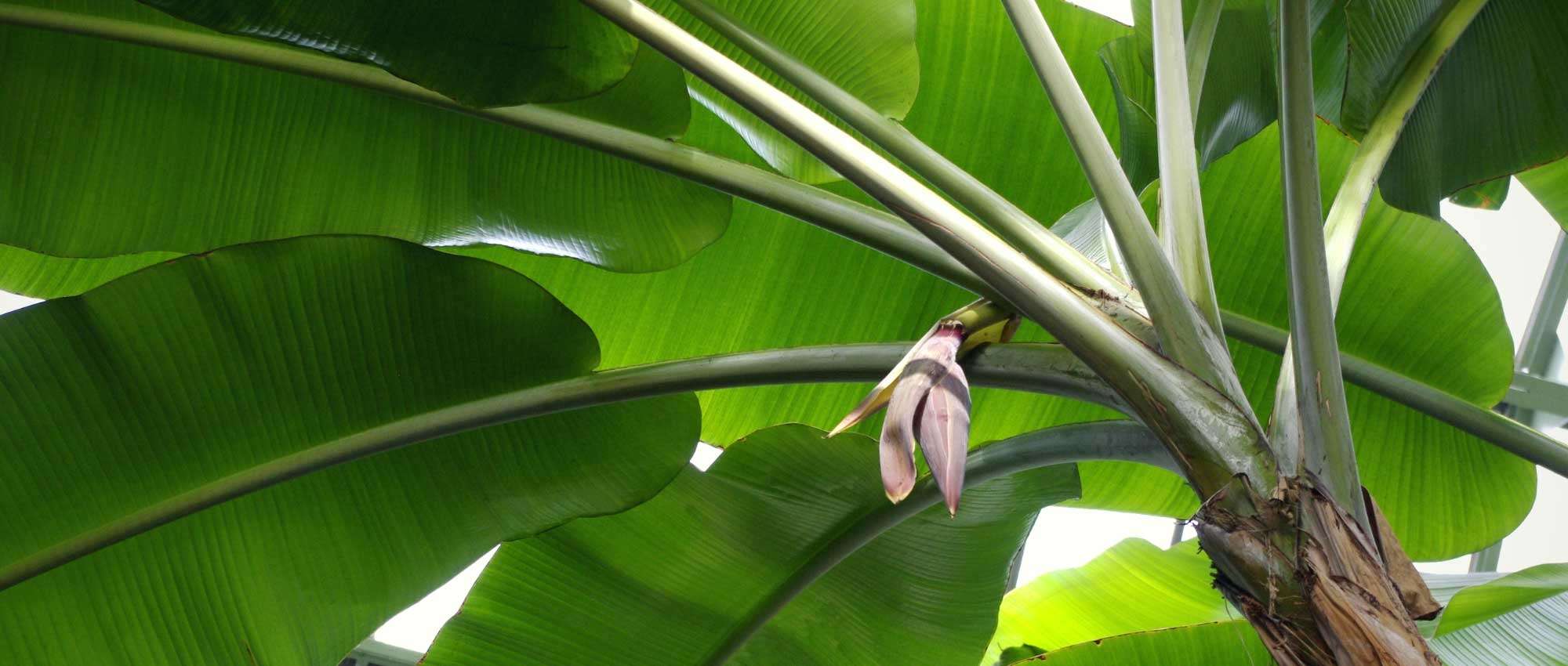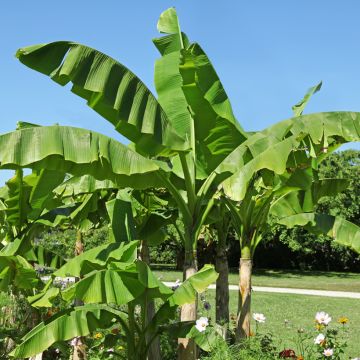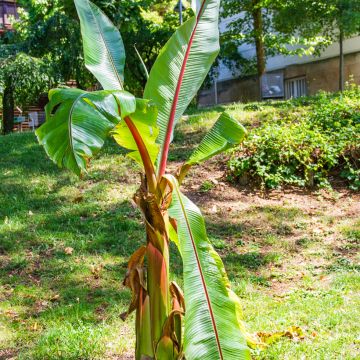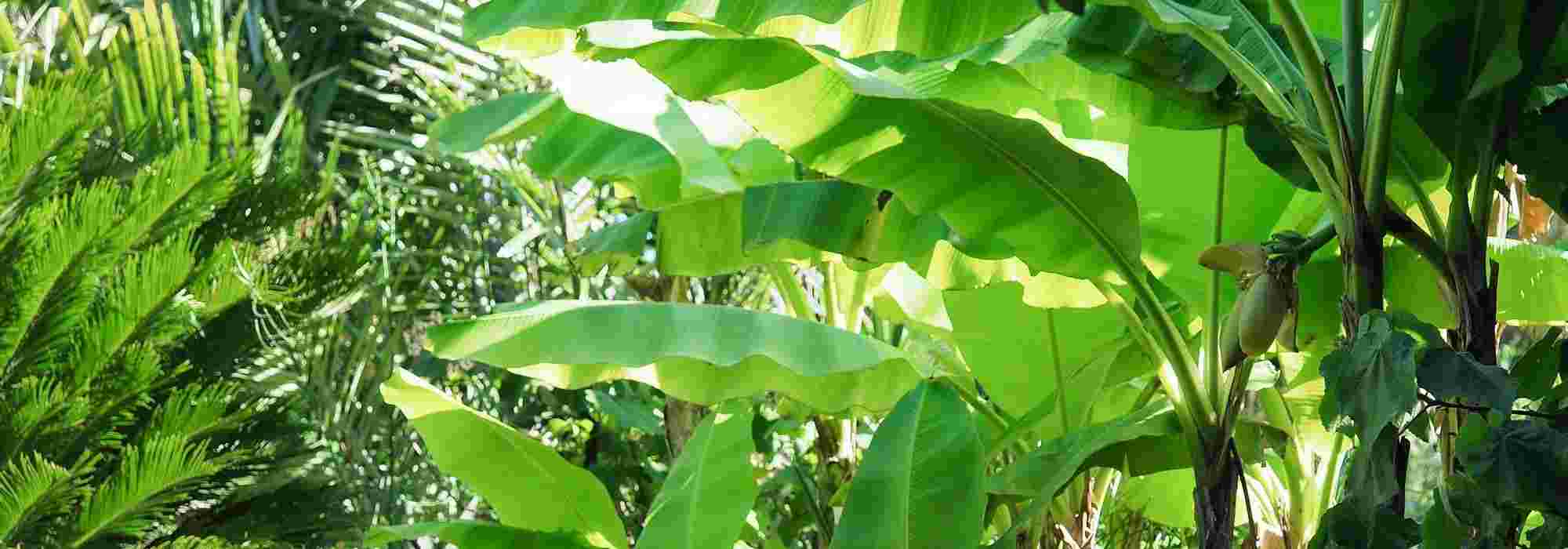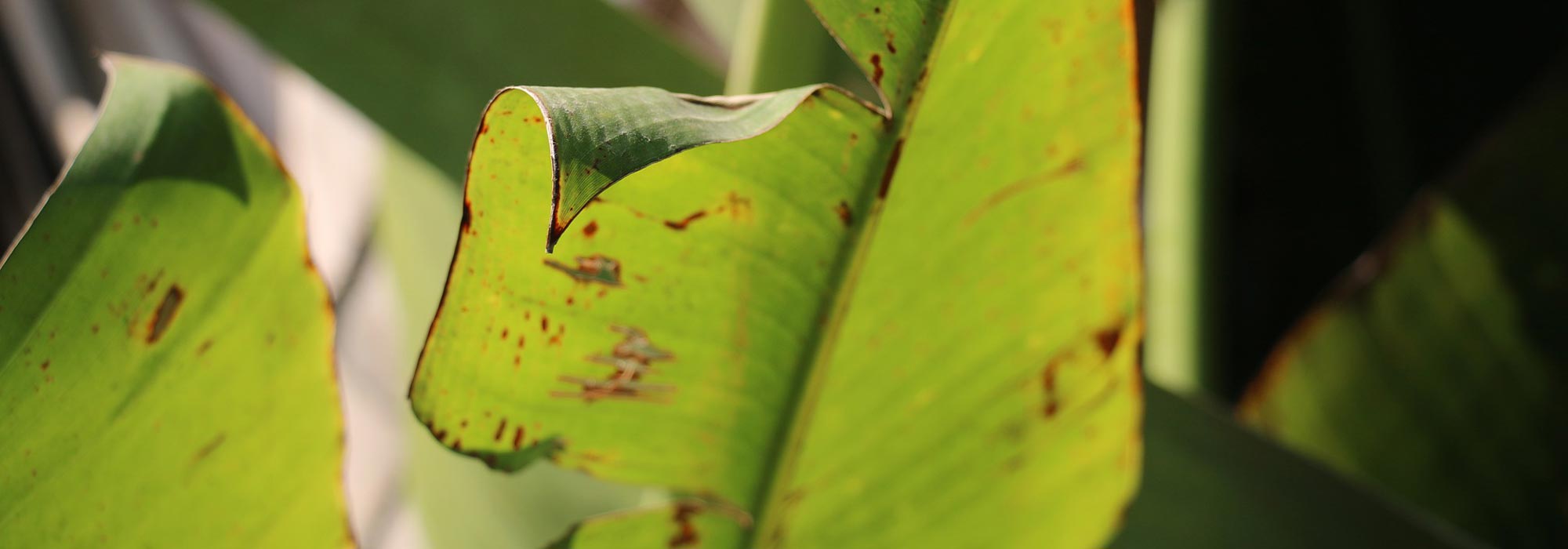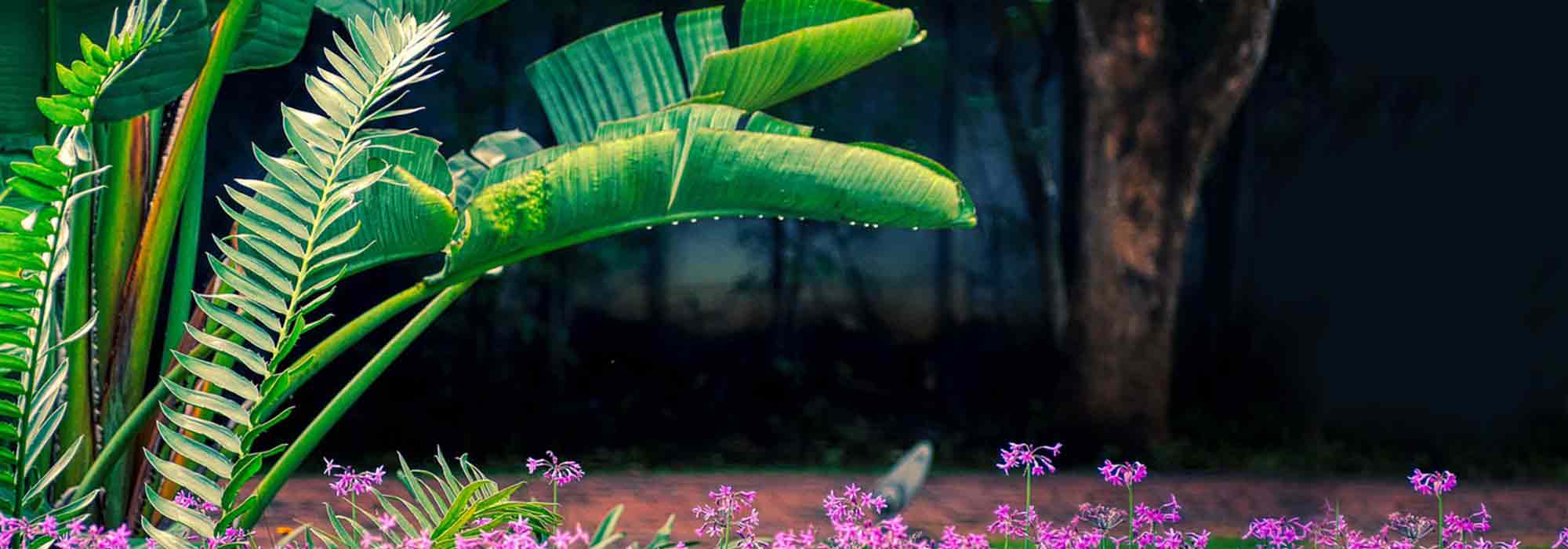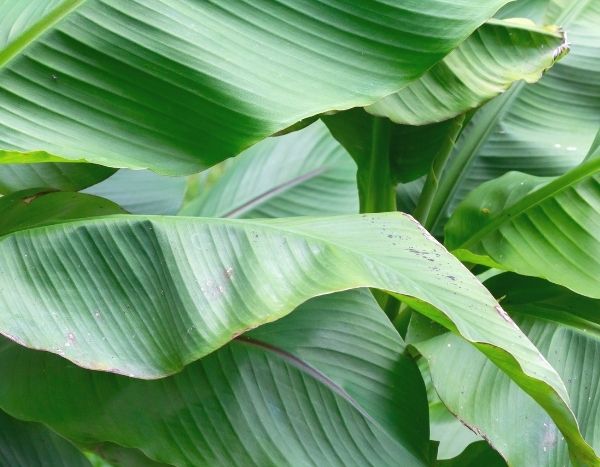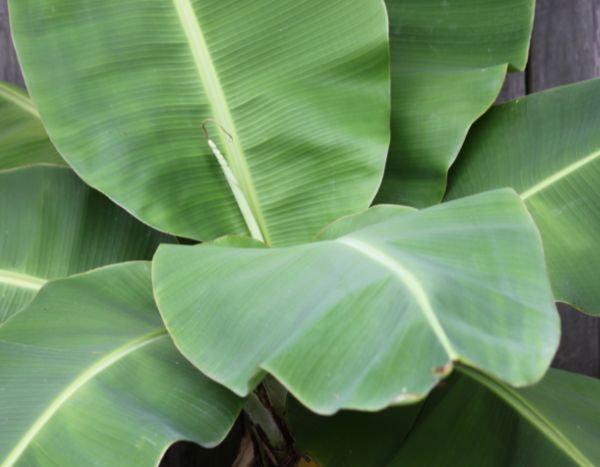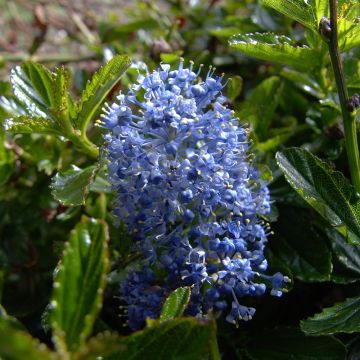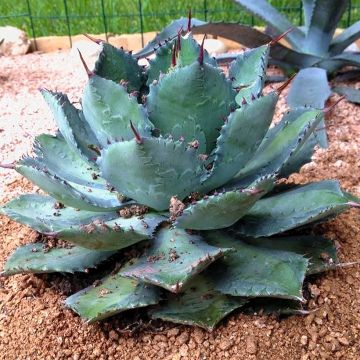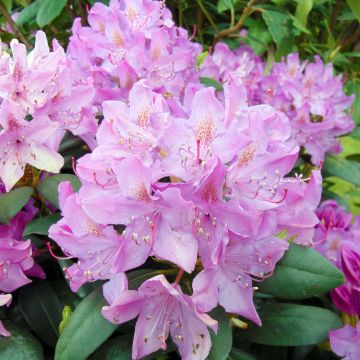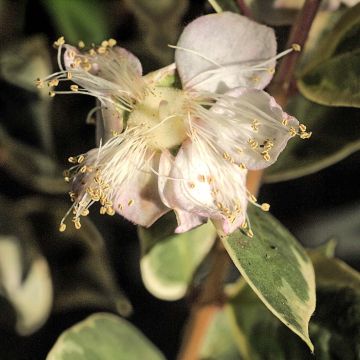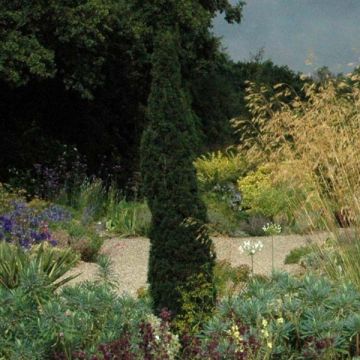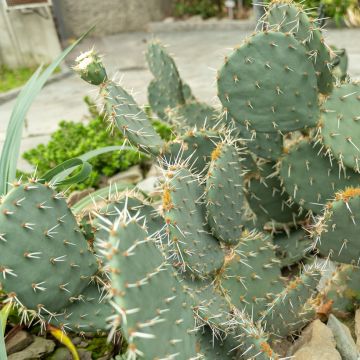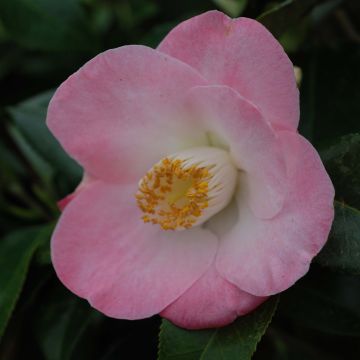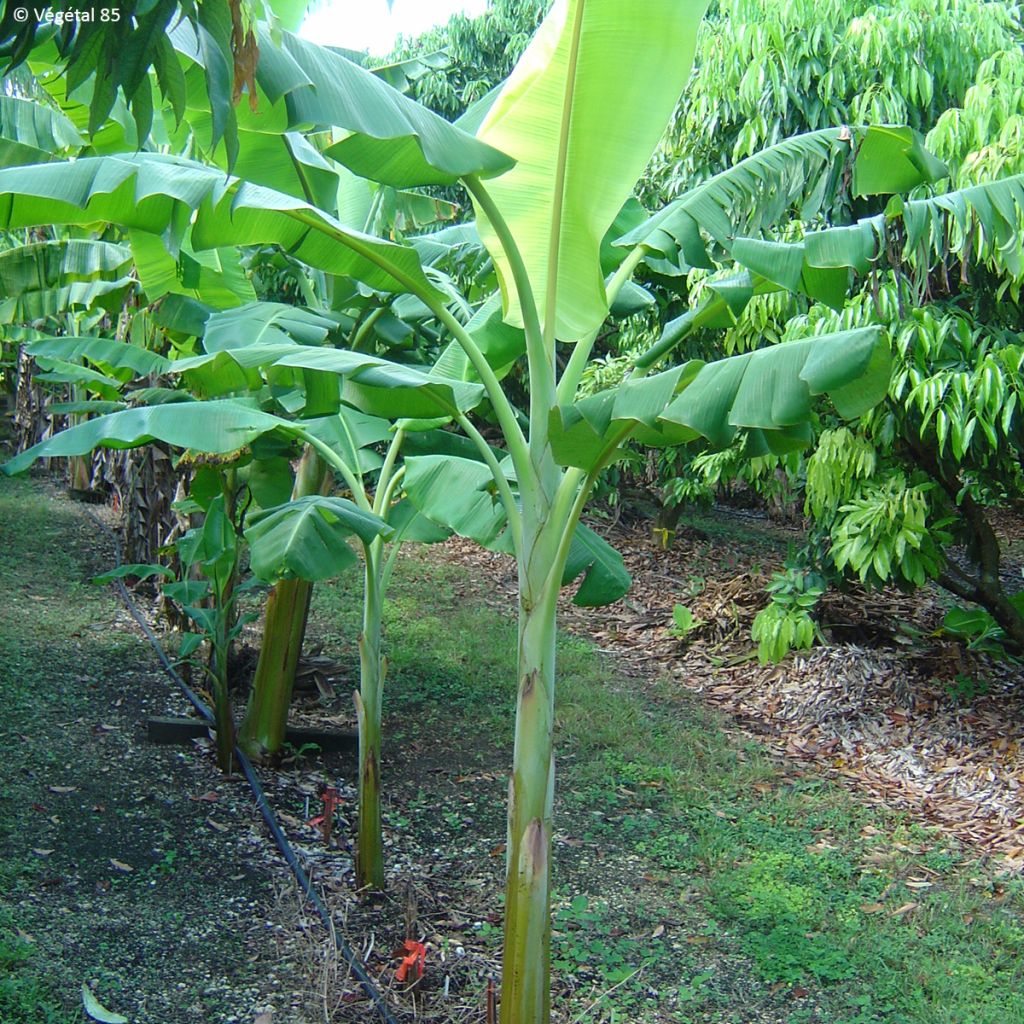

Musa paradisiaca Dwarf Orinoco


Musa paradisiaca Dwarf Orinoco
Musa paradisiaca Dwarf Orinoco
Musa (x) paradisiaca Dwarf Orinoco (syn. Dwarf Topocho ou Dwarf Bluggoe)
Plantain, Banana
Special offer!
Receive a €20 voucher for any order over €90 (excluding delivery costs, credit notes, and plastic-free options)!
1- Add your favorite plants to your cart.
2- Once you have reached €90, confirm your order (you can even choose the delivery date!).
3- As soon as your order is shipped, you will receive an email containing your voucher code, valid for 3 months (90 days).
Your voucher is unique and can only be used once, for any order with a minimum value of €20, excluding delivery costs.
Can be combined with other current offers, non-divisible and non-refundable.
Why not try an alternative variety in stock?
View all →This plant carries a 24 months recovery warranty
More information
We guarantee the quality of our plants for a full growing cycle, and will replace at our expense any plant that fails to recover under normal climatic and planting conditions.
Would this plant suit my garden?
Set up your Plantfit profile →
Description
Musa x paradisiaca 'Dwarf Orinoco' is a dwarf banana tree with edible fruit. It is a clone of the famous Orinoco banana with shorter vegetation, also known as Topocho or Bluggoe. Resistant to wind, drought, and cold, it offers unique fruits, with a triangular or square shape, to be enjoyed green or yellow. Green bananas, harvested early, transform into delicious fried treats, while ripe yellow bananas have sweetness and fragrance. Their soft texture and sweet and tangy taste distinguish them from supermarket varieties. This easy to grow banana requires patience and ideal conditions to fully ripen.
Originally from the Orinoco Valley in Venezuela, Musa x paradisiaca 'Dwarf Orinoco', also called Orinoco or Bluggoe and Topocho or Platano Burro in Spanish-speaking countries, is a cultivar of banana tree with smaller dimensions than its cousins. This herbaceous perennial plant, a member of the Musaceae family, has a tuberous rhizome. Mainly cultivated in Florida, it is known for its compact size and adaptation to tropical climates. This dwarf banana tree has rapid and short growth, typically reaching a height of 1.5 to 2 metres. The trunk, called a stipe, is composed of basal leaf sheaths arranged in a spiral, similar to the structure of palm trees. However, the banana tree is an annual plant, meaning it dies after fruit ripening, making way for new trunks that emerge from the rhizome buds each year. Its thick leaves are 1 to 2 metres long and fold along the midrib. They demonstrate good resistance to winds, which often lacerate the leaves of other banana species. In summer, it produces yellow-white flowers grouped in showy paniculate clusters resembling spikes, with female flowers at the base of the floral stem and male flowers at the top. Its fruits, bananas, measure 10 to 20 cm in length, with a triangular or square cross-section, rather short and stout. They are grouped in bunches of several dozen fruits, usually weighing 8 to 15 kg in total. After fruiting, the banana tree dies, but it produces suckers, ensuring the emergence of new stipes. The ripening of a bunch of bananas takes several months, which is why producing bananas outdoors, outside of greenhouses, proves to be a significant challenge.
The bananas of Musa 'Dwarf Orinoco' can be enjoyed both when green and when ripe. When fully ripe, they may sometimes have small dark cracks, which are characteristic. These bananas belong to the ABB group. Bananas in this group have a dual purpose: their relatively starch-rich fruits are suitable for cooking, but can also be eaten fresh when fully ripe. In addition to their culinary versatility, these plants have some resistance to drought and cercosporiosis (a leaf fungal disease), which is a notable advantage.
With patience, the 'Dwarf Orinoco' variety offers the opportunity to discover delicious fruits. It is resistant to frost down to -7 or -8°C. The term 'Dwarf' suggests a modest stature, limited to 2 to 3 metres in height, offering optimal adaptability for greenhouse cultivation, even in less favourable regions. Ideally, place it as a solitary plant in the middle of a lawn, or better yet, within a landscape composition evoking a tropical atmosphere or the charm of distant islands, alongside plants such as Beschorneria yuccoides, Melianthus major, Chamaerops humilis, Cordylines, Agaves, or Yuccas. It blends perfectly with remarkable plants such as Cannas, Tetrapanax papyrifera Rex, Fargesias, or Miscanthus, bringing a distinctive exotic touch to temperate gardens. Its modest size makes it easy to grow in large outdoor pots that can be brought indoors in winter. When placed in a large container, it becomes an elegant decoration for the terrace on its own. In this context, it harmoniously pairs with other conservatory plants such as Nerium oleander, citrus trees, Chilean myrtle, mimosas, or Strelitzia reginae.
Like many perennial plants, banana trees go dormant during winter, with their above-ground parts drying out and dying. Plants shipped in winter are therefore pruned to the ground (leaves and stems) by our teams, promoting optimal growth in spring.
Musa paradisiaca Dwarf Orinoco in pictures
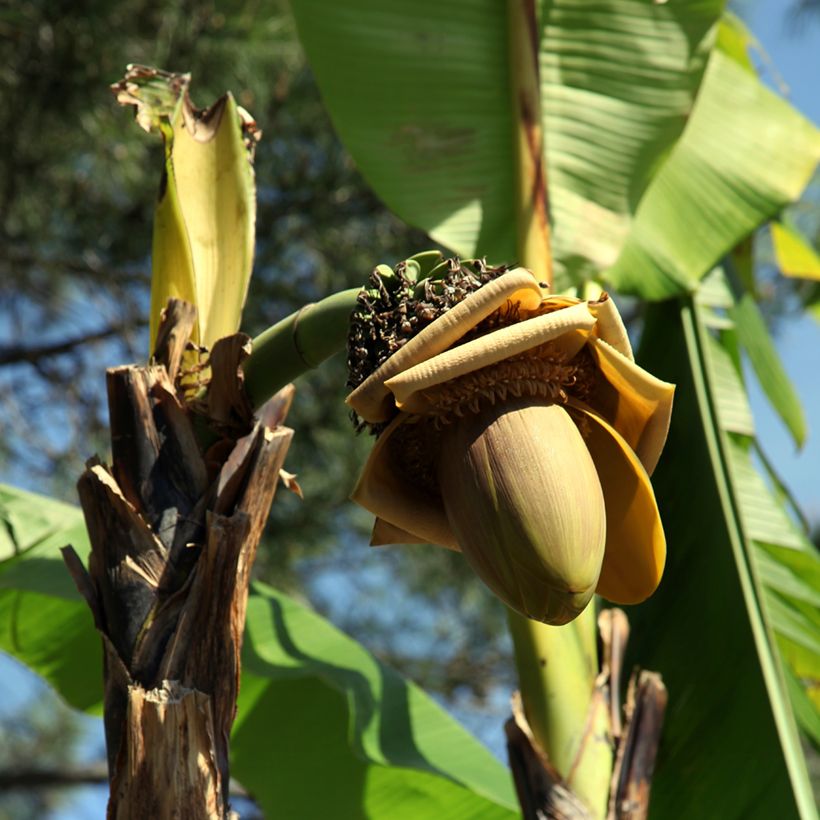

Plant habit
Flowering
Foliage
Botanical data
Musa
(x) paradisiaca
Dwarf Orinoco (syn. Dwarf Topocho ou Dwarf Bluggoe)
Musaceae
Plantain, Banana
Musa japonica Dwarf Orinoco, Musa Dwarf Topocho, Musa Chamaluco Enano
Cultivar or hybrid
Other Musa - Banana tree
View all →Planting and care
Plant Musa x paradisiaca Dwarf Orinoco in spring or summer, in well-tilled soil, rich in humus, and remaining moist. Choose a sunny and sheltered location, as wind can weaken the foliage. Soak the root ball in water for a few minutes before planting. Dig a hole (3 times the volume of the root ball) and place a layer of gravel at the bottom to facilitate drainage. Cover with a mixture of rich garden soil, compost, and sand, place the root ball and cover with soil. Firmly pack and water generously.
In spring and summer, regularly apply organic fertiliser. Water regularly in summer (about 2 to 3 times a week). The Banana tree is not very susceptible to diseases and pests.
In winter, cut back the leaves along the trunk and protect the crown by installing a wire mesh filled with dead leaves along the pseudo-trunk. Cover the top with a winter cover to prevent excessive moisture. The Venezuelan Dwarf Banana tree will regrow from the base or the shoots formed around the base.
Pot cultivation is possible, taking into account the future height of the Banana tree (1.5 to 2.5 m for the Venezuelan Dwarf Banana tree). Repot approximately every 2 years. Bring the pot indoors before the first frost, in a bright place but without direct sunlight. Mist the foliage if necessary or fill a saucer with moist clay balls, as the Banana tree is a tropical plant and appreciates humid environments.
Planting period
Intended location
Care
Planting & care advice
This item has not been reviewed yet - be the first to leave a review about it.
Similar products
Haven't found what you were looking for?
Hardiness is the lowest winter temperature a plant can endure without suffering serious damage or even dying. However, hardiness is affected by location (a sheltered area, such as a patio), protection (winter cover) and soil type (hardiness is improved by well-drained soil).

Photo Sharing Terms & Conditions
In order to encourage gardeners to interact and share their experiences, Promesse de fleurs offers various media enabling content to be uploaded onto its Site - in particular via the ‘Photo sharing’ module.
The User agrees to refrain from:
- Posting any content that is illegal, prejudicial, insulting, racist, inciteful to hatred, revisionist, contrary to public decency, that infringes on privacy or on the privacy rights of third parties, in particular the publicity rights of persons and goods, intellectual property rights, or the right to privacy.
- Submitting content on behalf of a third party;
- Impersonate the identity of a third party and/or publish any personal information about a third party;
In general, the User undertakes to refrain from any unethical behaviour.
All Content (in particular text, comments, files, images, photos, videos, creative works, etc.), which may be subject to property or intellectual property rights, image or other private rights, shall remain the property of the User, subject to the limited rights granted by the terms of the licence granted by Promesse de fleurs as stated below. Users are at liberty to publish or not to publish such Content on the Site, notably via the ‘Photo Sharing’ facility, and accept that this Content shall be made public and freely accessible, notably on the Internet.
Users further acknowledge, undertake to have ,and guarantee that they hold all necessary rights and permissions to publish such material on the Site, in particular with regard to the legislation in force pertaining to any privacy, property, intellectual property, image, or contractual rights, or rights of any other nature. By publishing such Content on the Site, Users acknowledge accepting full liability as publishers of the Content within the meaning of the law, and grant Promesse de fleurs, free of charge, an inclusive, worldwide licence for the said Content for the entire duration of its publication, including all reproduction, representation, up/downloading, displaying, performing, transmission, and storage rights.
Users also grant permission for their name to be linked to the Content and accept that this link may not always be made available.
By engaging in posting material, Users consent to their Content becoming automatically accessible on the Internet, in particular on other sites and/or blogs and/or web pages of the Promesse de fleurs site, including in particular social pages and the Promesse de fleurs catalogue.
Users may secure the removal of entrusted content free of charge by issuing a simple request via our contact form.
The flowering period indicated on our website applies to countries and regions located in USDA zone 8 (France, the United Kingdom, Ireland, the Netherlands, etc.)
It will vary according to where you live:
- In zones 9 to 10 (Italy, Spain, Greece, etc.), flowering will occur about 2 to 4 weeks earlier.
- In zones 6 to 7 (Germany, Poland, Slovenia, and lower mountainous regions), flowering will be delayed by 2 to 3 weeks.
- In zone 5 (Central Europe, Scandinavia), blooming will be delayed by 3 to 5 weeks.
In temperate climates, pruning of spring-flowering shrubs (forsythia, spireas, etc.) should be done just after flowering.
Pruning of summer-flowering shrubs (Indian Lilac, Perovskia, etc.) can be done in winter or spring.
In cold regions as well as with frost-sensitive plants, avoid pruning too early when severe frosts may still occur.
The planting period indicated on our website applies to countries and regions located in USDA zone 8 (France, United Kingdom, Ireland, Netherlands).
It will vary according to where you live:
- In Mediterranean zones (Marseille, Madrid, Milan, etc.), autumn and winter are the best planting periods.
- In continental zones (Strasbourg, Munich, Vienna, etc.), delay planting by 2 to 3 weeks in spring and bring it forward by 2 to 4 weeks in autumn.
- In mountainous regions (the Alps, Pyrenees, Carpathians, etc.), it is best to plant in late spring (May-June) or late summer (August-September).
The harvesting period indicated on our website applies to countries and regions in USDA zone 8 (France, England, Ireland, the Netherlands).
In colder areas (Scandinavia, Poland, Austria...) fruit and vegetable harvests are likely to be delayed by 3-4 weeks.
In warmer areas (Italy, Spain, Greece, etc.), harvesting will probably take place earlier, depending on weather conditions.
The sowing periods indicated on our website apply to countries and regions within USDA Zone 8 (France, UK, Ireland, Netherlands).
In colder areas (Scandinavia, Poland, Austria...), delay any outdoor sowing by 3-4 weeks, or sow under glass.
In warmer climes (Italy, Spain, Greece, etc.), bring outdoor sowing forward by a few weeks.































